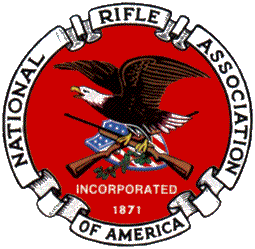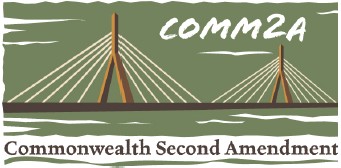Conventional Pistol Competition
http://competitions.nra.org/how-to-get-started/conventional-pistol-competition.aspx
PDF of information, rules and NRA guidelines can be downloaded by clicking HERE
A great resource for Bullseye Competition information and events can be found here:
http://www.bullseyepistol.com/
Conventional Pistol Competition
Many individuals become interested in pistol competition; however, unless they start off with the proper information, they find it difficult. The cost of equipment is generally a stumbling block. Many feel that unless they have the best of everything they cannot compete. This is not true. Most start with a minimum investment of a .22 caliber rimfire pistol (autoloader or revolver), spotting scope and stand.
Pistol competition may be fired outdoors or indoors. The course of fire is basically the same, but the distances are different.
Equipment
Section 3 of the NRA Pistol Rule Book defines authorized equipment
and ammunition. This section is not meant to restrict equipment but
to define limitations.
Pistol Autoloader or revolver? Up until about 30 years ago the revolver was the one to use. Some competitors still use a revolver, but the autoloader is now used almost exclusively. Autoloaders have been developed that are capable of top-notch accuracy. An autoloader will provide an advantage when firing timed fire (5 shots in 20 seconds) and rapid fire (5 shots in 10 seconds) courses.
It should be noted that the standard course of fire is a "3-gun aggregate." This is fired with .22 caliber rimfire, center fire, and .45 caliber pistols. However, it is not necessary that you have 3 different guns. In most tournaments you may enter and fire only one or more stages of the aggregate. Many competitors entering complete aggregate only own a .22 and .45 caliber pistol since the .45 caliber may be used for the center fire stage.
Spotting Scopes - A spotting scope will let you see your shots on your target and make sight corrections. Scopes need a stand for support or some means to mount on a gun box if used. They come in various price ranges and, as with all optics, you get what you pay for. Good resolution is important as you will need to see a .22 caliber hole on a target at 50 yards if you fire outdoors. A 20X to 30X is generally used.
Ammunition
Not much can be said about ammunition. Obviously, you
will
need the proper ammunition for the pistol you'll use. Match grade
ammunition is available commercially and costs more than "regular."
This is manufactured under high standards and is more accurate for
competitive shooting. Many competitors hand-load their own
ammunition (except .22 rimfire). This is not only cost effective
but allows for loads to be "customized" for a particular gun. In
many cases, hand-loaded ammunition is more accurate than
commercially produced match grade ammunition. If you use the
hand-load route, be sure to follow all safety precautions.
Accessories
Some of the most common and useful accessories include:
Sights: All target pistols come with an adjustable rear sight. This is a must. However, various brands of adjustable sights are available, some better made than others. Experience will tell which one is better for you.
Optical and electronic sights are available and currently allowed in NRA Conventional Pistol competition. Those sights which project an image upon the target (laser) are not permitted. These sights are a help to the shooter whose eyesight is "not what it used to be." They are not recommended for the new shooter who is still mastering the fundamentals of sight alignment, which is absolutely necessary for a champion shooter.
Grips: All pistols come with grips. Unfortunately, these are made for a standard size hand. Since no two people are identical, it is unlikely that the grips from the factory will fit properly. Custom grips are available as accessories and will vary in cost depending on if you want true custom grips (made exclusively for you) or off-the-shelf.
Shooting Box or Kit: Some means is necessary to transport your pistol and accessories to and from the range. This can be as elaborate as a large box which holds everything to a simple cloth or leather case. The choice will depend on the type and amount of shooting you do. The box can be used for storage at home.
Targets
Rule 18.15(e) in the NRA Conventional Pistol Rule Book
states in part, "it is the competitor's responsibility to frame the
correct target for the specific match and distance." As a new
pistol competitor, you need to be familiar with what the proper
targets are. NRA official targets are described in Section 4 in the
Pistol Rule Book. Section 7 will give you the targets required for
various courses fired.
Courses of Fire
NRA conventional pistol competition consists of firing slow, timed,
and rapid fire. This is done at 50 and 25 yards outdoors and almost
exclusively at 50 feet indoors. Generally an outdoor match will
consist of 20 shots, slow fire at 50 yards (two 10-shot strings, 10
minutes per string), 20 shots, timed fire at 25 yards (four 5-shot
strings, 20 seconds per string), 20 shots, rapid fire at 25 yards
(four 5-shot strings, 10 seconds per string), and the National
Match Course (10-shots slow fire at 50 yards, 10-shots timed fire
(two 5-shot strings), and 10-shot strings (two 5-shot strings).
This match consists of 90 shots for a possible aggregate total of
900 points. For a 2700 aggregate this match is fired once with each
gun: .22 caliber rimfire, center fire, and .45 caliber. Many match
programs call for only one or two guns, that is a 900 or 1800
aggregate.
Most indoor tournaments are fired with .22 caliber rimfire only for a 900 aggregate. However, some indoor matches use all guns for a complete 2700 aggregate.



